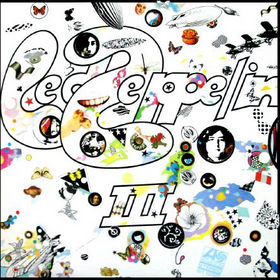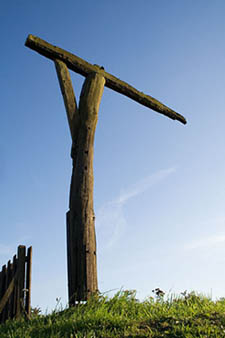I got a list of demands
Written on the palm of my hands
I ball my fist and you gonna know where I stand
Let's take a short break from my series of posts featuring songs from the albums that everyone owned when I was in college. (Don't worry, fellow boomers -- we'll get back to 1970 shortly.)
This post is the first in another series, which we can call "Songs That Were Featured in Great Nike Commercials." I hope my habit of jumping from series to series doesn't annoy you. But my habit of suddenly detouring from one topic to another is one of things that makes me so charming. Plus I have a short attention span. I get bored easily.
Apparently I got bored easily in grade school as well. I dug out all my old report cards when I visited my parents recently. This was one of the comments on my 2nd-grade report card: "Gary is making excellent progress in all areas except self-control." The next quarter's comment was "Gary seems to be having difficulty in settling down after the Christmas excitement." Things didn't change all that much over the next few years. From my 5th-grade report card: "Gary's biggest problem is lack of self-discipline."
(Those dried-up old bit . . . oh, never mind.)
Without further ado, here's the 2008 Nike-SPARQ TV commerical:
<object width="480" height="385"><param name="movie" value="http://www.youtube.com/v/rHHMaiNyztk?fs=1&hl=en_US"></param><param name="allowFullScreen" value="true"></param><param name="allowscriptaccess" value="always"></param><embed src="http://www.youtube.com/v/rHHMaiNyztk?fs=1&hl=en_US" type="application/x-shockwave-flash" allowscriptaccess="always" allowfullscreen="true" width="480" height="385"></embed></object>
Saul Williams and the other members of his "poetry slam" team were featured in SlamNation, a documentary about the 1996 National Poetry Slam. In 1998, Williams starred in a feature film about poetry slams titled Slam.
<object width="480" height="385"><param name="movie" value="http://www.youtube.com/v/gMJaVmzoxmk?fs=1&hl=en_US"></param><param name="allowFullScreen" value="true"></param><param name="allowscriptaccess" value="always"></param><embed src="http://www.youtube.com/v/gMJaVmzoxmk?fs=1&hl=en_US" type="application/x-shockwave-flash" allowscriptaccess="always" allowfullscreen="true" width="480" height="385"></embed></object>
He released his first LP in 2001 (Rick Rubin produced it). He toured with Nine Inch Nails in 2005, and NIN's Trent Reznor produced his next CD, The Inevitable Rise and Liberation of Niggy Tardust. (A song from David Bowie's 1972 album The Rise and Fall of Ziggy Stardust and the Spiders from Mars will be featured in a future "2 or 3 lines.")
The "SPARQ Rating" -- SPARQ is an acronym for speed, power, agility, reaction, and quickness -- is a standardized test of athleticism created in 2004. It has been called "The SAT of Athleticism."
The general SPARQ test has five components: 40-yard dash, kneeling power ball (a/k/a medicine ball) toss, agility shuttle run, vertical jump, and "Yo-Yo intermittent recovery test," or "beep test."
In the beep test, an athlete sprints 20 meters when a "beep" is sounded, and then sprints back to the starting line when a second beep is sounded. After a short rest period, another beep sounds and the athlete does the back-and-forth sprint all over again. The recovery time allowed between each pair of sprints is gradually shortened. The test ends when the athlete is unable to make it back to the starting line before the beep signalling that it's time to start again sounds.
<object width="640" height="385"><param name="movie" value="http://www.youtube.com/v/5JskyITO-AQ?fs=1&hl=en_US"></param><param name="allowFullScreen" value="true"></param><param name="allowscriptaccess" value="always"></param><embed src="http://www.youtube.com/v/5JskyITO-AQ?fs=1&hl=en_US" type="application/x-shockwave-flash" allowscriptaccess="always" allowfullscreen="true" width="640" height="385"></embed></object>
There are also sport-specific assessments for baseball, fast-pitch softball, football, boys' and girls' soccer, and boys' and girls' basketball. Tim Tebow outscored Reggie Bush on the football test, but 2008 decathlon gold-medalist Bryan Clay poned both of them.
Nike partnered with SPARQ, Inc., to promote cross-training shoes, apparel, and training equipment designed for SPARQ training -- most famously, a really cool parachute you wear while running to create drag when you run. And it works just as well for dogs as for people:
<object width="480" height="385"><param name="movie" value="http://www.youtube.com/v/rfiwkferl58?fs=1&hl=en_US"></param><param name="allowFullScreen" value="true"></param><param name="allowscriptaccess" value="always"></param><embed src="http://www.youtube.com/v/rfiwkferl58?fs=1&hl=en_US" type="application/x-shockwave-flash" allowscriptaccess="always" allowfullscreen="true" width="480" height="385"></embed></object>
The Nike SPARQ commercial features NFL stars (Adrian Peterson and LaDainian Tomlinson), NBA and WNBA stars (Kevin Durant, Brandon Roy, Steve Nash, and Diana Taurasi), soccer players (Landon Donovan, Abby Wambach, and Hope Solo), lacrosse players (Ryan Powell and Kyle Harrison), and a baseball player (Matt Holiday). The line that Tomlinson delivers to get things started -- "My better is better than your better" -- is pretty good, and the shot of Peterson running with no fewer than FIVE of those parachutes strapped around his waist is very cool.
But it's Saul Williams and "List of Demands" that makes this one of the all-time great Nike commercials. This song starts off loud and fast and never changes -- if you have high blood pressure, it might not be a good idea for you to listen to it.
<object width="640" height="385"><param name="movie" value="http://www.youtube.com/v/zDMtaIcrfQ0?fs=1&hl=en_US"></param><param name="allowFullScreen" value="true"></param><param name="allowscriptaccess" value="always"></param><embed src="http://www.youtube.com/v/zDMtaIcrfQ0?fs=1&hl=en_US" type="application/x-shockwave-flash" allowscriptaccess="always" allowfullscreen="true" width="640" height="385"></embed></object>
Click here to buy "List of Demands" from iTunes:
<a href="http://itunes.apple.com/us/album/list-of-demands-reparations/id281814491?i=281814562&uo=4" target="itunes_store"><img src="http://ax.phobos.apple.com.edgesuite.net/images/web/linkmaker/badge_itunes-lrg.gif" alt=List of Demands (Reparations) - The Inevitable Rise and Liberation of Niggy Tardust /></a>
Click here if you prefer Amazon:









